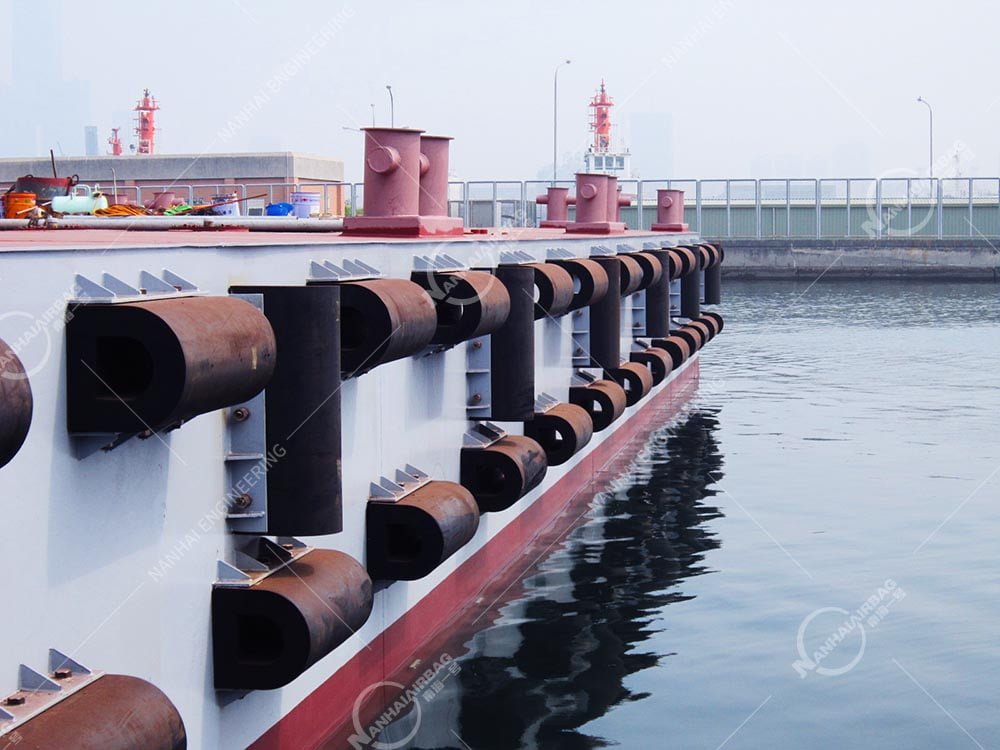Pneumatic Fenders’ Specifications
09/15/2024Salvage Rubber Airbags
09/19/2024D-shaped Rubber Fender

D-shaped rubber fender is a device commonly used to protect ships, docks, ports and other structures from impact and friction. The following is a detailed introduction to D-fender:
- Design and Structure
Shape: The cross-section of the D-fender is “D” shaped, usually semicircular. This shape enables it to effectively disperse and absorb the impact force from the ship. The outer side of the fender is wider, which helps to provide a larger buffer area.
Size: The size of the D-fender can be customized according to actual needs, including length, thickness and width. Common specifications are: width ranges from 100mm to 600mm, and thickness usually ranges from 50mm to 300mm.
Material: Mainly made of high-strength rubber or synthetic materials. The choice of rubber materials usually includes natural rubber, synthetic rubber, etc., which have excellent wear resistance, weather resistance and impact resistance.
- Functions and Benefits
Impact Absorption: The D-fender can effectively absorb and disperse the impact force, reduce damage to ships and dock structures, and prevent scratches and dents.
Durability: Rubber materials have high wear resistance and weather resistance, and can be used for a long time in various harsh environments without being easily damaged.
Anti-slip: The surface of rubber has a certain anti-slip function, which helps to maintain good friction in wet or slippery environments.
Easy maintenance: Compared with fenders made of other materials, rubber fenders are relatively simple to maintain, and generally only require regular inspection and cleaning.
- Installation method
Fixing method: D-type fenders are usually installed by bolts, screws or adhesives. During installation, it is necessary to ensure that the contact surface between the fender and the structure is clean and flat to ensure that it is firmly fixed.
Installation location: The installation location is usually at the edge of the dock, on the hull of the ship, or on other structures that need to be protected. During installation, the appropriate length and number of fenders need to be determined according to the size and needs of the ship or facility.
- Application areas
Ports and docks: D-type fenders are installed on the edges of docks and ports to protect dock structures from ship impacts.
Ships: D-type fenders are installed on the hull or berthing area of the ship to protect the hull from the impact of docks or other ships.
Industrial facilities: Install on the edges and walls of some industrial facilities to prevent damage caused by handling equipment or vehicle collision.
- Maintenance and care
Regular inspection: Check the wear of the fender to ensure that there are no obvious cracks or deformations.
Cleaning: Clean the surface of the fender regularly to remove attached dirt and debris to maintain its good function.
Replacement: If the fender is severely damaged or aged, it needs to be replaced in time to ensure its protective effect.
Reasonable use and maintenance of D-type rubber fenders can greatly improve the durability of the facility, reduce maintenance costs, and extend service life.
